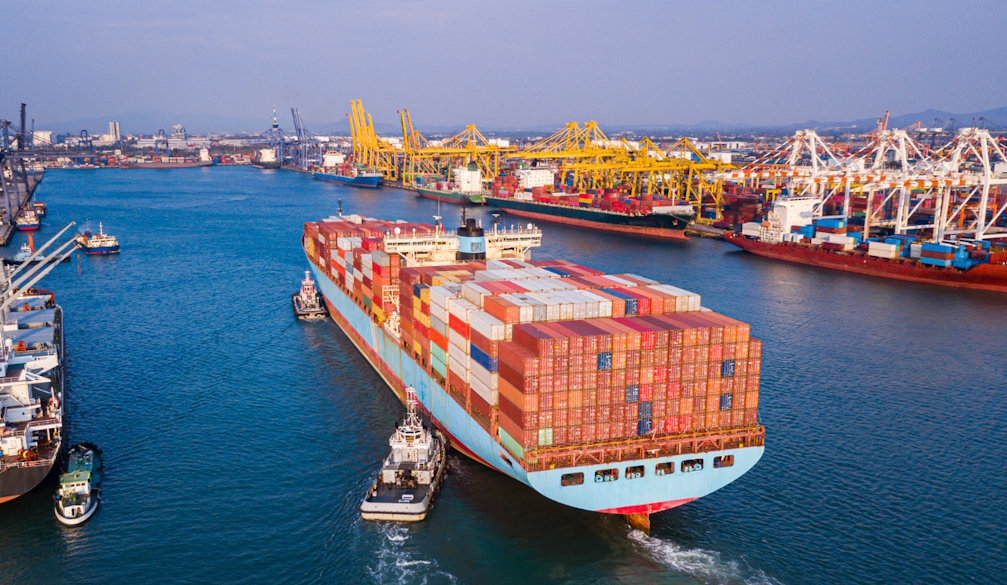Australia after the Trump–Xi meeting: sector-by-sector opportunities, risks, and realistic scenarios
- Written by Times Media

How the U.S.–China thaw could play out across key sectors, with best case / base case / downside scenarios, leading indicators to watch, and concrete moves for businesses and policymakers. Timelines use your local date (AEST) and look out over the next 24–36 months.
Quick take (TL;DR)
-
Macro: A cautious U.S.–China de-escalation lowers volatility but doesn’t end strategic competition. Australia’s sweet spot is to sell into both systems (commodities, education, tourism) while allying in high-trust tech and defence supply chains with the U.S., Japan, Korea, and Europe.
-
Where upside is largest: Critical minerals, defence/AUKUS supply chains, agri-exports, services (education/tourism), LNG short-to-medium term.
-
Where risk is highest: Semiconductors/AI hardware exposure to China, telecoms/cyber, and any business over-reliant on one market (either China or the U.S.).
-
Playbook: Hedge with diversified buyers; lock in offtakes; move fast on permitting & midstream processing; align with trusted-partner standards; scenario-test FX and tariff shocks.
1) Critical minerals & rare earths
Why it matters: Australia is uniquely placed to supply lithium, nickel, graphite, rare earths and—critically—the midstream stages (processing, separation, cathode/anode materials) that allies want outside China.
Best case (12–36 months)
-
Truce sustains; allied demand accelerates for non-China midstream capacity.
-
Australia secures long-dated offtakes with U.S./EU/Japan/Korea automakers and defence primes.
-
Faster approvals and targeted incentives crowd-in private capital for refineries and separation plants.
Base case
-
Demand steady; China still dominant but price volatility eases.
-
Australia grows share gradually; a few flagship midstream projects reach FID and first production.
Downside
-
Truce unravels; tariff and export-control yo-yo whipsaws prices.
-
Financing costs spike; marginal projects shelved; China tightens controls, stressing spot markets.
Indicators to watch
-
U.S./EU “foreign-entity-of-concern” (FEOC) rules; IRA tax-credit eligibility lists
-
Japan/Korea OEM offtake announcements; Australian state/federal permitting timelines
-
China export-licence changes; LCE/nickel sulfate prices; AUD/USD swings
Moves now
-
Lock in multi-buyer offtakes (mix of U.S., EU, Japan/Korea).
-
Prioritise midstream (not just mining) to capture higher margins.
-
Structure contracts with price-volatility bands and force-majeure clarity.
-
Engage early with U.S./EU standards (traceability, ESG, local-content).
2) Agriculture & food exports
Why it matters: Any easing in U.S.–China tension usually lowers commodity risk premia and helps confidence in Asian demand.
Best case
-
China’s import appetite remains firm; SPS/technical barriers ease; shipping rates steady.
-
Australia benefits via grains, beef, dairy, wine, horticulture; re-entry or volume recovery in lines previously constrained.
Base case
-
Stable volumes; competition from U.S./South America rises but global prices are orderly.
Downside
-
Renewed geopolitical flare-ups; SPS barriers return; sudden tariff shifts or quotas redirect trade flows.
Indicators
-
China customs notices; global freight costs; RMB stability; U.S. farm deal headlines
-
Australian seasonal outlooks; El Niño/La Niña updates
Moves now
-
Diversify customer base across ASEAN, India, Middle East.
-
Invest in origin branding + traceability (wins with premium buyers and aligns with allied standards).
-
Use FX hedges; negotiate flexible shipment windows.
3) LNG & conventional energy
Why it matters: Australia remains a crucial LNG supplier; demand in North Asia stays robust while energy transition ramps.
Best case
-
Asian buyers seek long-term security; new mid-life extensions and debottlenecking get funded.
-
Price volatility moderates; Australia’s reliability premium holds.
Base case
-
Steady offtake; spot exposure declines; maintenance capex prioritized over greenfield.
Downside
-
Sharp global slowdown or accelerated rival supply (U.S. Gulf, Qatar) compresses margins; domestic policy uncertainty chills investment.
Indicators
-
JKM futures curve; Japanese/Korean utility procurement; EU storage levels
-
Australian regulatory clarity (emissions baselines, approvals)
Moves now
-
Prefer long-term SPAs over spot; plan methane intensity tracking and disclosure.
-
Explore blue/green blending pilots to future-proof contracts.
4) Education & tourism services
Why it matters: These are among Australia’s highest-value services exports; confidence rises when geopolitics is calmer.
Best case
-
Visa processing improves; flight capacity back to or above 2019; Chinese and ASEAN enrollments rebound; FIT and group tourism recover.
Base case
-
Steady rebuild; more diversified mix (ASEAN, India, Middle East) offsets any China cyclicality.
Downside
-
New frictions (consular, health, safety narratives) dent flows; airfare spikes suppress travel.
Indicators
-
Airline schedule filings; student visa approvals; outbound China travel data; AUD strength
Moves now
-
Target portfolio markets (Vietnam, Indonesia, Philippines, India).
-
Bundle work-integrated learning and regional campus options.
-
Tourism: invest in China-ready digital channels + payments and non-China segments to hedge.
5) Defence, aerospace & AUKUS supply chains
Why it matters: Even with a thaw, trusted-partner defence integration is accelerating.
Best case
-
Clear AUKUS industry roadmaps; Australian SMEs win metal, electronics, software, sustainment work; export licences streamline.
Base case
-
Gradual ramp; certification and cyber-hygiene requirements slow supplier onboarding but pipeline grows.
Downside
-
Political delays or budget pressures; certification bottlenecks keep local content lower than hoped.
Indicators
-
AUKUS pillar updates; U.S./UK export-control tweaks; Australian defence industry facility announcements
Moves now
-
Get ITAR/UK controls-ready; invest in CMMC-style cyber compliance.
-
Join OEM supplier programs early; co-locate near shipyard/airframe hubs.
6) Technology hardware, semiconductors & AI compute
Why it matters: This is the most policy-sensitive space—export controls, investment screening, and data rules swing quickly.
Best case
-
Clear, stable guardrails; Australia attracts allied cloud/AI investments and edge-manufacturing (test/packaging, specialty tools).
Base case
-
Mixed: software/services thrive; hardware stays constrained by controls and capex cycles.
Downside
-
New controls on advanced chips/EDA; retaliatory measures on materials or equipment; chilled cross-border capital flows.
Indicators
-
U.S./allied chip control lists; China’s counter-measures; hyperscaler capex plans
Moves now
-
Tilt toward sovereign-friendly AI stacks, secure cloud, and applied AI in mining, agri, health.
-
Avoid single-country critical dependencies in hardware.
-
Build data-residency and security-by-design capabilities.
7) Advanced manufacturing & green industry (batteries, solar, hydrogen)
Best case
-
Allied incentives + stable geopolitics draw cell component, electrolyser, and power-electronics lines to Australia; local demand from renewables/storage surges.
Base case
-
Niche successes (components, enclosures, chemicals); scale mostly remains offshore.
Downside
-
Subsidy races elsewhere outcompete AU on cost; permitting delays; grid bottlenecks stall projects.
Indicators
-
Global incentive schemes (IRA, EU Green Deal); AU grid/connection reforms; OEM siting decisions
Moves now
-
Focus on comparative advantages: critical-mineral-to-chemicals, cathode/anode, electrolyte salts, power-conversion gear.
-
Pursue cluster strategies (port + rail + workforce + renewable PPAs).
8) Financial services & capital flows
Best case
-
Lower volatility narrows credit spreads; inbound FDI from allies into resources/infra; AUD benefits from commodity stability.
Base case
-
Range-bound AUD; selective FDI; private credit continues to fill gaps.
Downside
-
Renewed shocks drive AUD whipsaw; capex delayed; IPO window stays shut.
Indicators
-
AUD/USD; ASX resource capex plans; inbound M&A screening trends
Moves now
-
Stress-test portfolios for FX and policy shocks; secure multi-currency facilities.
-
Consider export credit and allied DFI (U.S., Japan, Korea, EU) for big industrials.
9) Telecommunications, cyber & data
Best case
-
Converging “trusted vendor” frameworks; smoother rollout of 5G/6G and subsea cables with allied partners.
Base case
-
Ongoing vendor restrictions; higher compliance costs but manageable.
Downside
-
Cyber tit-for-tat escalates; data-localisation demands diverge; procurement disputes.
Indicators
-
5G/6G standards; major breach news; cross-border data rules
Moves now
-
Adopt zero-trust architectures; map data flows for residency needs; vet vendors for supply-chain security.
Cross-sector scenario dashboard (summary)
| Scenario | Macro conditions | AU winners | AU vulnerabilities | What to do now |
|---|---|---|---|---|
| Best case (de-escalation holds) | Lower tariffs/controls volatility, steady Asian growth | Critical minerals midstream, defence/AUKUS, agri, education/tourism, LNG | Over-reliance on a single buyer; labour & grid constraints | Fast-track permitting; lock multi-market offtakes; invest in cyber/compliance |
| Base case (managed competition) | Episodic flare-ups, policy steady | Same as above, but slower scale-up | Financing costs for capex-heavy plays; certification bottlenecks | Hedge FX; modular capex; diversify markets |
| Downside (re-escalation) | New controls, tariff swings; slower growth | Domestic services, resilient staples | Commodity price shock; SPS/export barriers; chip/hardware exposure | Activate contingency contracts; increase inventory buffers; revisit China exposure maps |






















